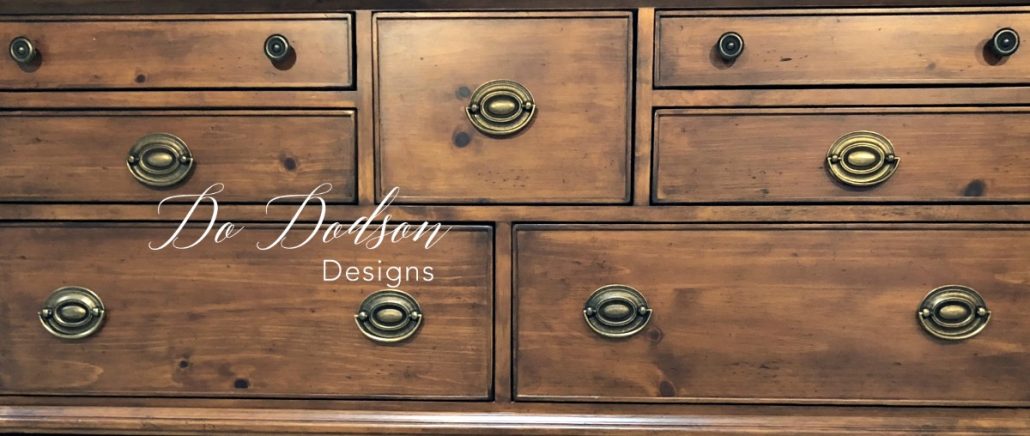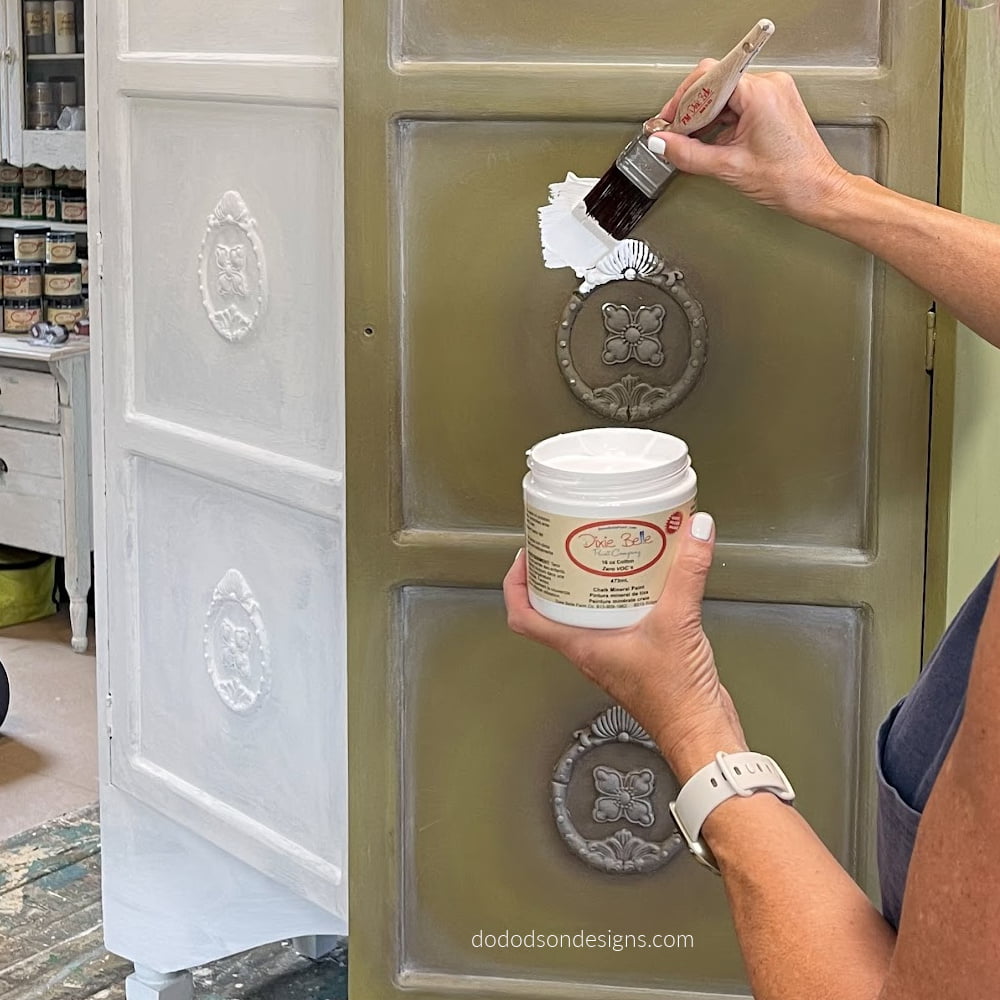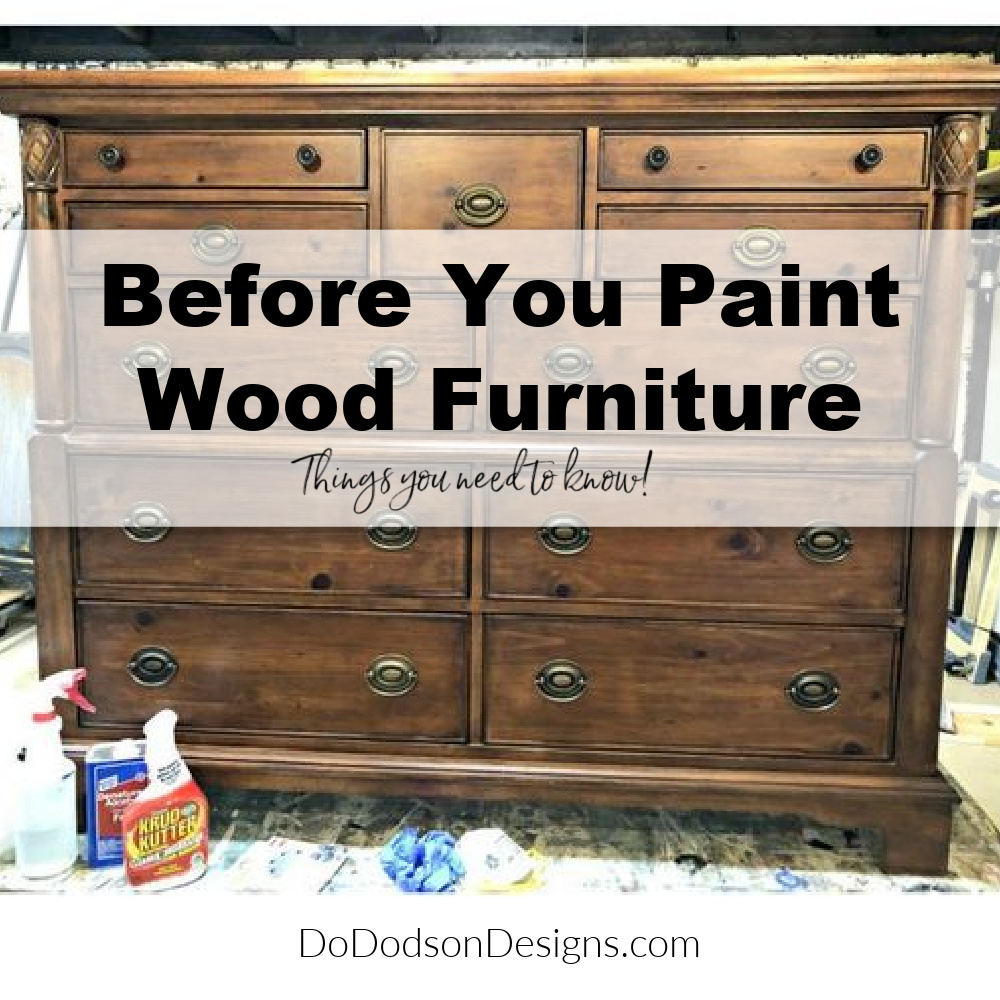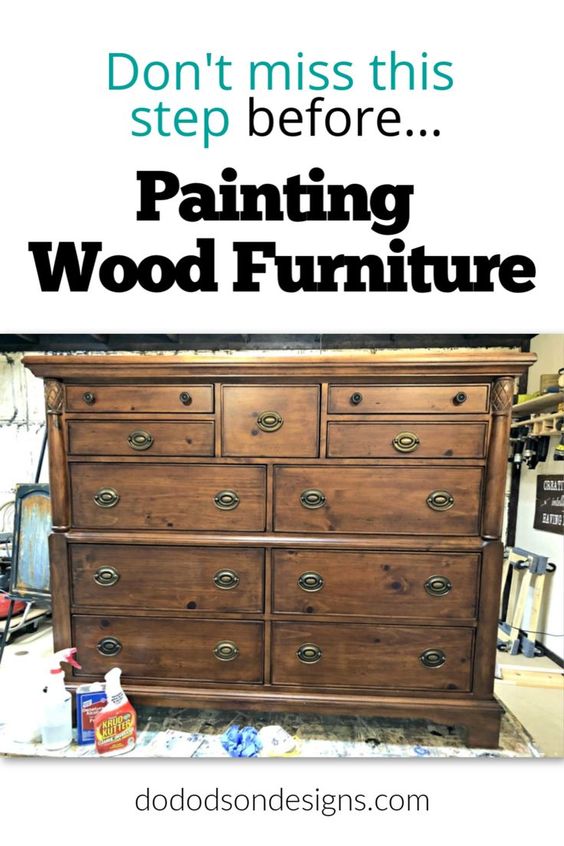
Painting wood furniture can be fun and rewarding when you do it the right way. The last thing you want is to have your finish fail because you missed a crucial step in the prep work. I have a few simple steps that I want to share with you to have peace of mind and be confident in your furniture painting.
This post contains a few affiliate links to help you find the products I use. You are not charged extra to use any of the links, but I will use any income for more fun projects! To see my full disclaimer, click here.
Painting Wood Furniture Prep 101
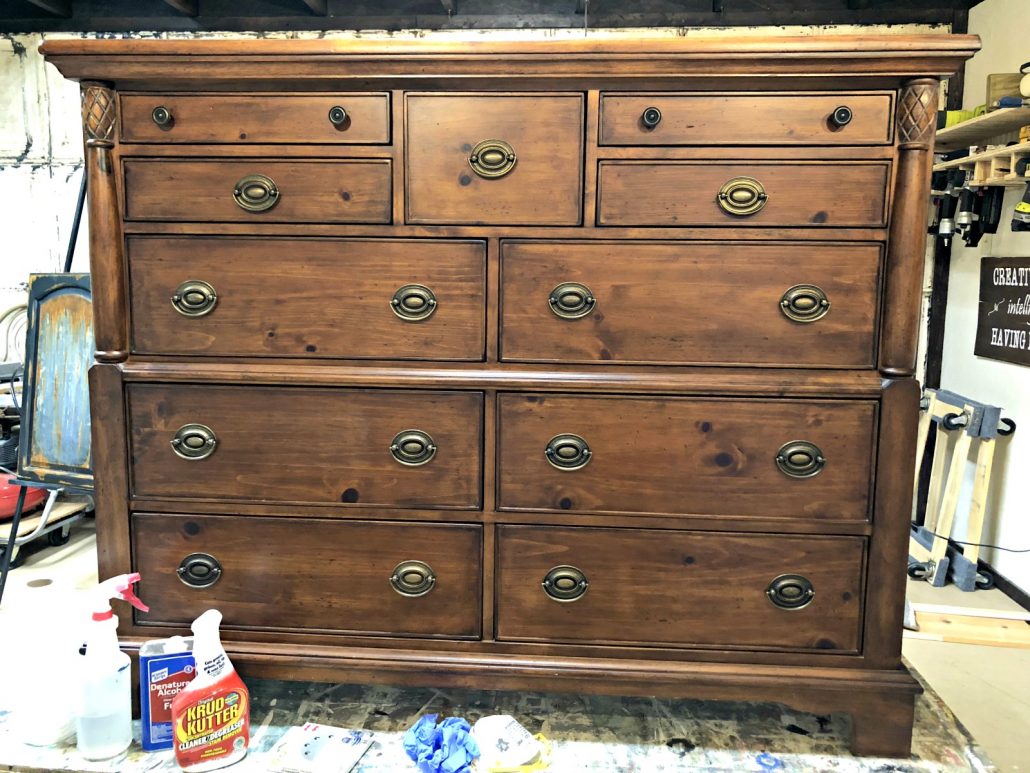
Here are the products that I keep on hand for my prep before painting wood furniture.
After prepping, check out these fantastic PAINT colors for your next furniture makeover.
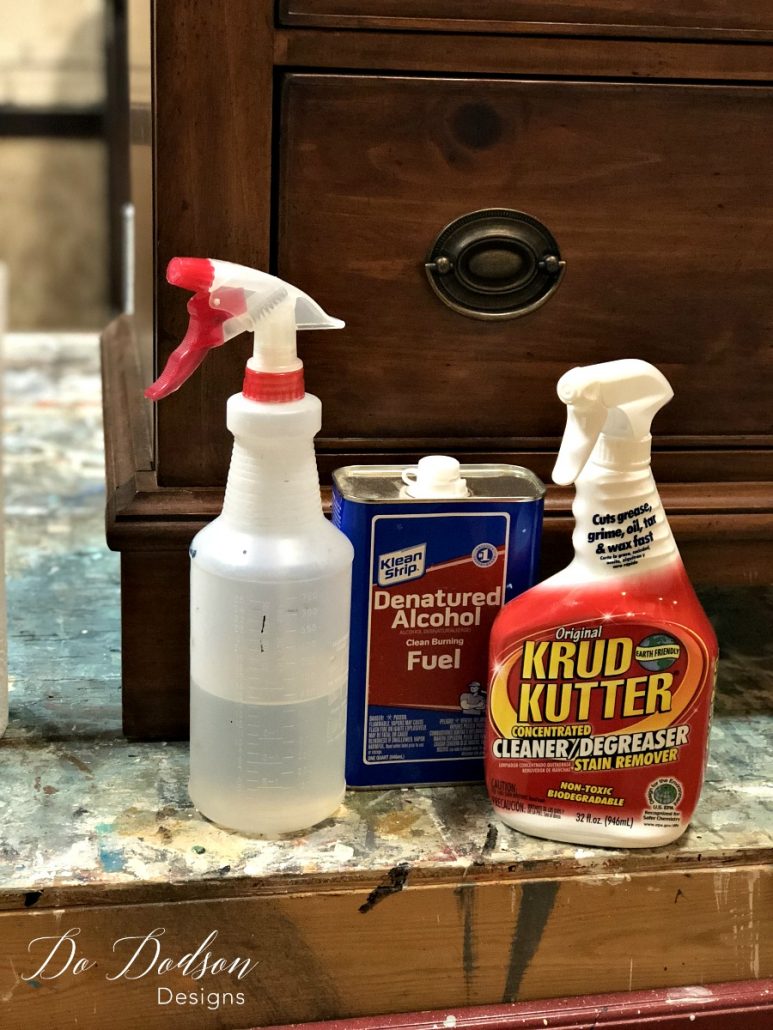
These two products are furniture painters’ best friends! For a simple, clean project, I use a 1:1 mixture of the denatured alcohol and water in a spray bottle. I lightly mist the wood surface and wipe it down with paper towels. Sometimes I use recycled t-shirts that I get from garage sales. The mixture will remove oils and any dirt on the surface. The alcohol in the mix will cause the wood to dry quickly, so you can go ahead and proceed to the next step.
If the wood furniture is filthy (which is usually the case), I use Krud Kutter. You should always follow the directions on the bottle to get the right mixture.
I use a water mixture and degreaser in a spray bottle or use it in the concentrated form. The application is the same as the water and alcohol mixture above.
After cleaning with Krud Kutter, I always wipe down the furniture with a cotton cloth dampened with water to remove any residual degreaser from the surface before painting my wood furniture.
Protective Gear To Use When Prepping Furniture
The main reason to wear a dust mask is to reduce your chances of developing respiratory problems or certain types of cancer of the respiratory system later in life. Please take care of your lungs!
Use protective eyewear when using the sander. The sander can cause flying particles and sometimes small wood chips to break away from dry, brittle wood. Please, protect your eyes when you’re pepping to paint wood furniture.
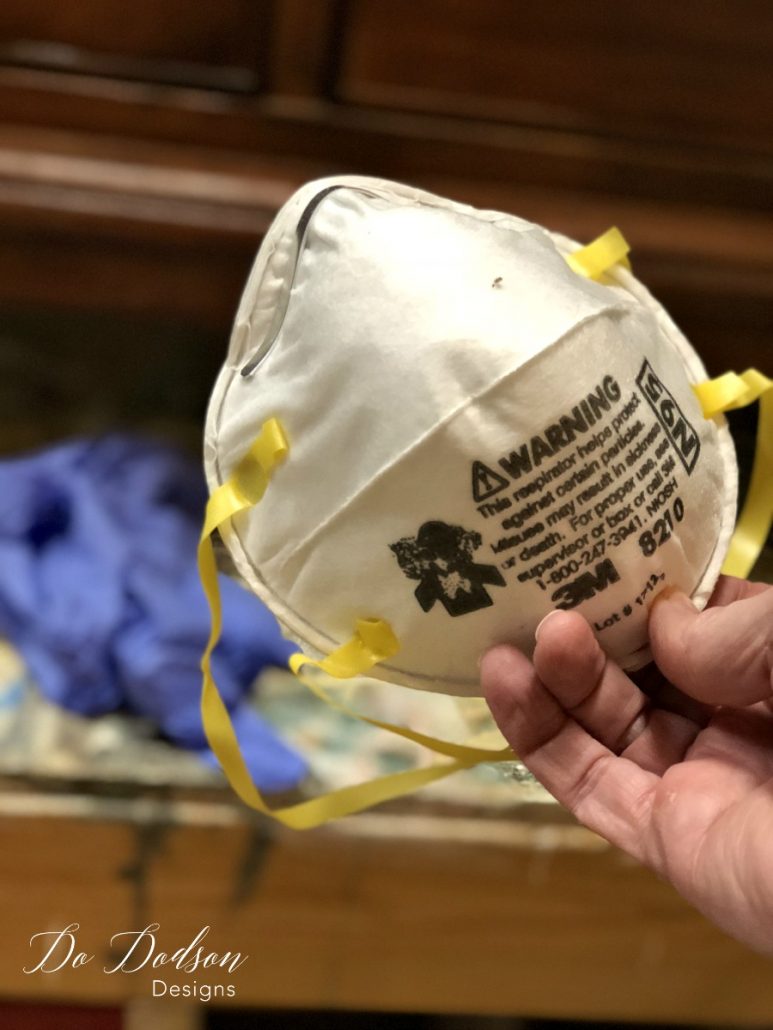
Once the wood furniture is clean and free of dirt and or oils, I scuff up or lightly sand the wood to create a slightly rough surface. Doing this will prepare the wood surface for the paint/primer and ensure that it sticks well. Slick surfaces do not hold paint well.
Using a hand orbital sander can make sanding quick and easy. I use the hand sander on the tops and larger areas like the sides. The drawers and hard to get into areas are a little more delicate, so I hand sand those with a sanding block or sandpaper.
After sanding, I use a water-dampened cloth to remove any residual dust from the wood. Once it is dry, it’s ready to paint.
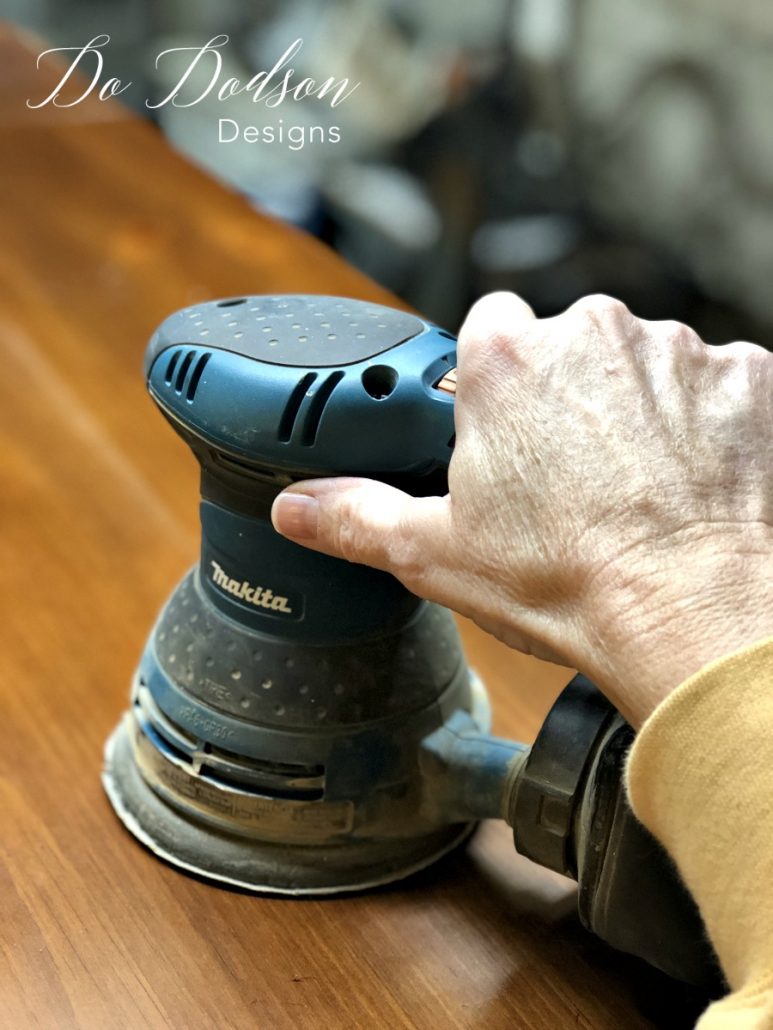
Here’s a quick video describing the steps in prepping before painting wood furniture.
Following these few steps can lessen your risks in a finish that could fail before you paint wood furniture. Trust me when I say I have learned the hard way. The peace of mind is worth the extra steps. If you want to see more wood furniture makeovers, CLICK HERE to see a veneer nightmare makeover!
And if you’re ready to paint, I have a few suggestions on what paints are best for furniture makeovers. CLICK HERE to learn more.
Until the next project. xo, Do

